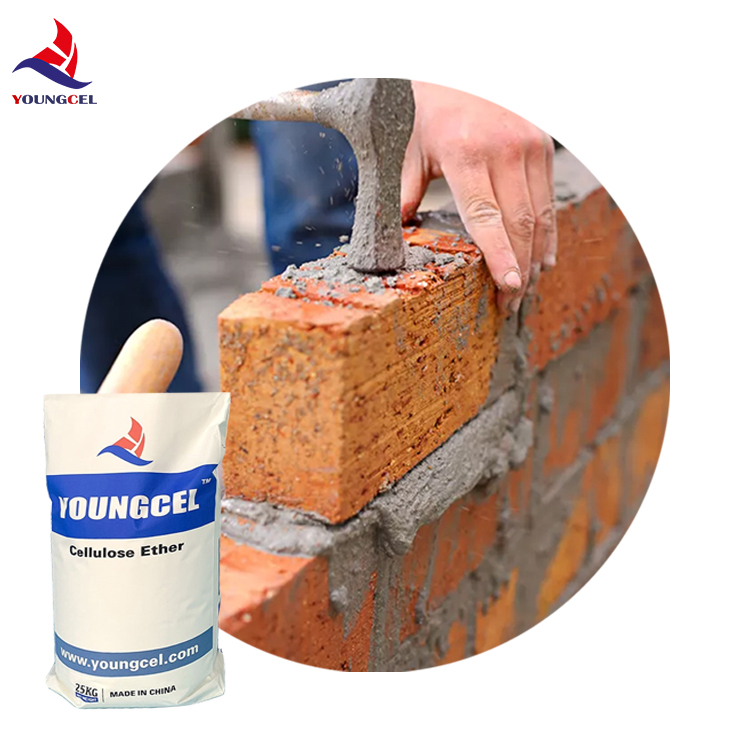The Role of HPMC in Mortar Formulation
Hydroxypropyl Methylcellulose (HPMC) is a versatile cellulose ether widely used in construction materials, particularly in mortar formulations. As the demand for high-performance building materials has increased, HPMC has emerged as a critical additive due to its unique properties that enhance the performance, usability, and sustainability of mortars. This article examines the role of HPMC in mortar, highlighting its benefits, applications, and considerations for usage.
What is HPMC?
HPMC is a non-ionic water-soluble polymer derived from cellulose, which is a natural polymer obtained from plant fibers. Through a series of chemical reactions, cellulose is modified to produce HPMC, endowing it with the ability to disperse in water and create viscous solutions. This property makes HPMC an essential additive in various applications, especially in the construction industry.
Benefits of HPMC in Mortar
1. Improved Workability One of the primary benefits of incorporating HPMC into mortar formulations is the enhancement of workability. HPMC increases the viscosity of the mortar mix, allowing for smoother application and improved adherence to surfaces. This is especially advantageous for floor and wall installations, where ease of spreading and leveling is crucial for achieving a uniform finish.
2. Water Retention HPMC significantly improves the water retention capacity of the mortar. This is vital during the curing process, as it prevents the rapid evaporation of water, ensuring that the cement has adequate time to hydrate properly. Adequate hydration leads to increased compressive strength and durability of the mortar.
3. Open Time Extension The inclusion of HPMC in mortar extends the open time, or working time, allowing for more flexibility during application. This is particularly beneficial in large-scale projects or in conditions where workers require additional time to position tiles or stone effectively before the mortar sets.
4. Enhanced Adhesion HPMC improves the adhesion properties of mortars, which is crucial for bonding with various substrates. Improved adhesion reduces the risk of delamination and enhances the overall durability of the bonded materials.
5. Eco-friendliness HPMC is derived from natural cellulose, making it an environmentally friendly additive. Its use in mortar formulations supports sustainable construction practices and can meet the increasing demand for eco-conscious building materials.
mortar hpmc

Applications of HPMC in Mortar
HPMC is commonly used in various types of mortars, including
- Tile Adhesives The construction industry often employs HPMC in ceramic tile adhesives, where its improved workability and enhanced adhesion properties are essential for ensuring that tiles remain securely fixed. - Render Mortars In render applications, HPMC helps to provide a uniform finish while ensuring that the mortar adheres well to the substrate, preventing cracks and peeling.
- Repair Mortars HPMC is also utilized in repair mortars where flexibility and workability are necessary to accommodate the intricacies of the repair process.
Considerations for Usage
While HPMC offers several advantages, it is essential to consider dosage and formulation specifications carefully. The optimal percentage of HPMC can vary based on the specific requirements of the project, climate conditions, and the desired characteristics of the final mortar product. Excessive amounts of HPMC may lead to issues such as excessive viscosity, which might hinder the application process.
Additionally, contractors and manufacturers should ensure proper mixing techniques to achieve a homogenous blend, maximizing the benefits of HPMC while avoiding clumping or uneven distribution.
Conclusion
In conclusion, Hydroxypropyl Methylcellulose is a valuable additive in mortar formulations, providing enhanced workability, water retention, adhesion, and open time. As the industry continues to seek high-performance and sustainable construction solutions, HPMC stands out as a key component that can help meet these demands. By understanding its benefits and considering application nuances, construction professionals can harness the full potential of HPMC in their mortar applications.
-
Rdp Powder: Key Considerations for Wholesalers in the Building Materials IndustryNewsJul.08,2025
-
Key Considerations for Wholesalers: Navigating the World of Hpmc - Based ProductsNewsJul.08,2025
-
Hpmc Detergent: Key Considerations for WholesalersNewsJul.08,2025
-
Key Considerations for Wholesalers: China Hpmc For Tile Adhesive, Coating Additives, Concrete Additives, and MoreNewsJul.08,2025
-
Crucial Considerations for Wholesalers: Navigating the World of Construction MaterialsNewsJul.08,2025
-
Key Considerations for Wholesalers Sourcing Additive For Cement, Additive For Concrete, Additive For Putty from Additive Manufacturer Shijiazhuang Gaocheng District Yongfeng Cellulose Co., Ltd.NewsJul.08,2025




